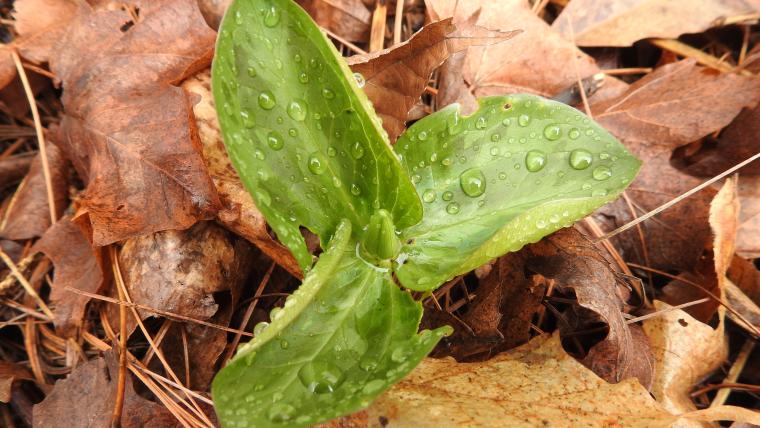
In a nutshell
Plants growing in the forest understory, including spring ephemerals, which are short-lived herbaceous plants, are important members of the forest plant community. Their primary strategy for gaining access to critical sunlight is to initiate their springtime activity before the trees put on leaves and close the canopy above them. Several recent studies have evaluated whether understory plants are advancing the timing of their spring activity to a greater degree than overstory trees are, or whether the opposite pattern is true, with conflicting reports. A situation where tree leaf-out is advancing more than the activity of understory plants could be highly detrimental to the understory herbaceous plants.
Professional and volunteer scientists from the Appalachian Mountain Club have tracked flowering in many trees, shrubs, and forbs since 2004 at permanent locations using USA-NPN protocols and along the length of the Appalachian Trail, which runs from Georgia to Maine, using iNaturalist. In a recent study, a team of Appalachian Mountain Club scientists evaluated observations of leaf out and flowering in 11 understory plant and 14 tree species to help address the outstanding question of which plant group is shifting their springtime activity more.
The team found that all plants showed earlier phenology in warmer springs, and that overall, understory plants advanced the timing of their activity twice as much as trees under warmer conditions. As well, for most species, the advancement was greater at higher elevations and latitudes, consistent with other studies. However, the authors reported an interesting twist: plants of the mid-Atlantic region – comprising the “middle” section of the Appalachian Trail – showed substantially more advancement than plants to the north or the south. And finally: when they looked at differences among the plant groups by region, they only saw evidence of greater advancement among understory plants in the north.
The findings of this analysis are good news for the understory plants. Greater advancement in the springtime activity of these plants compared to leaf-out in the overstory canopy means more time for them to grow prior to being shaded out by the larger trees.
What is special about this study?
This study aims to help resolve an open question, pertaining to the rates of change in the timing of springtime activity among overstory and understory trees. The research team evaluated phenology observations collected along an impressive latitude gradient, ranging from 34N to 46N. Studies encompassing such large geographic breadth are only possible through contributions of many, many dedicated volunteer and professional scientists collecting and reporting phenology observations.
What does this mean for YOU?
Several recent studies have explored changes in the timing of springtime activity in understory herbaceous plants and overstory trees and have reported conflicting results. Some researchers conclude that tree leaf-out is advancing more rapidly than understory plants; others report the opposite finding. Clearly, more research is needed, and more observations are needed. The present study underscores the importance of observations of the same phenomena across large regions, as plants don’t always behave the same way in different parts of their ranges.
Citation: Tourville, J.C., G.L.D. Murray, and S.J. Nelson 2024. Distinct latitudinal patterns of shifting spring phenology across the Appalachian Trail Corridor. Ecology e4403. https://doi.org/10.1002/ecy.4403